Crushing It on the Delaware Shore
A Quest to Find Out Who Best Crushes the State's Newly Official Drink, the Orange Crush.
The world of adult beverages has its rivalries. Peru and Chile will be forever be bickering over who owns Pisco. Both Scotland and Ireland will always insist they invented whiskey. Those are ancient battles.
More recently, we have the Crush Wars. The Orange Crush is an easygoing beach cocktail made of orange-flavored vodka, triple sec, lemon-lime soda and freshly squeezed orange juice, served in a pint glass over ice. It first emerged in the 1990s. And both Maryland and Delaware claim it as their own.
Officially. In August 2024, Delaware Gov. John Carney signed into law House Bill 444, which declared the Orange Crush the state’s official cocktail.
Not to be outdone, in April 2025 Maryland Gov. Wes Moore signed into law similar legislation.
This is the first time, to my knowledge, that two states have designated the same drink as their official cocktail.
The generally accepted history of the drink—which both sides agree upon—is that the Orange Crush was created in 1995 at the Harborside Bar and Grill, a charmingly scruffy dockside saloon in West Ocean City, Maryland. It was quickly adopted by The Starboard in Dewey Beach, Delaware, the most prominent bar along the southern Delaware shore. Owner Steve “Monty” Montgomery cheekily states the Starboard did not invent the Orange Crush, but merely “perfected” it.
But, as the business maxim goes, it’s "good to be best, but better to be first," and Delaware was first to legally go steady with the Orange Crush. So The Mix recently drove down to the shore towns of the First State to see how the local saloon keepers are safeguarding the dignity of Delaware’s official intoxicant.
Of all the shore communities along the eastern seaboard, Delaware’s may be the least known. Maine’s rocky shores are justly celebrated every summer. Massachusett’s Cape Cod enjoys a nearly poetic reputation. An appealingly raffish character is immediately brought to mind the moment anyone says “Jersey Shore.” Even Rhode Island, who shares a diminutive size with Delaware, has the nationally famous Newport.
Perhaps because of the greater fame of its neighbors, Delaware beaches have remained relatively unspoiled. There is less development and more preserved parkland, including the beautiful Delaware Seashore State Park, which encompasses 6 1/2 miles of ocean shoreline. The shore is composed of five small towns. Each has a distinct personality that everyone I talked to agreed upon without hesitation.
Beginning in the north is Lewes (pronounced “Lewis”). This is the oldest village, the first town founded in Delaware. It’s a perfectly preserved living museum of pre-Revolutionary architecture with a distinctly New England character. The next stop south, Rehobeth Beach, is the closest the Delaware shore gets to a big, cosmopolitan town, with many hotels and a long boardwalk of attractions. Dewey Beach, where Starboard is, is the party town where people swarm the sidewalks late into the night.
Next, after crossing the Indian River Inlet Bridge through the long, narrow seashore park, is Bethany Beach, “the quiet resort,” where there are noise ordinances and a juvenile curfew. Finally, you get to Fenwick Island, right on the Maryland border. This, too, is a quiet town, but you can see signs of the commercial riot that is Ocean City bleeding over as you approach the state line.
I tried Orange Crushes in each of these towns. Here’s what I learned.
Strangely enough, my first Orange Crush in Delaware was a canned version. It was the work of Sam Calagione, the founder of the Delaware-based Dogfish Head Brewery, one of the OGs of the craft brewing movement. Calagione met me in a booth at his Rehoboth Beach brewpub and quickly cracked open two cans of his Blood Orange and Mango Vodka Crush. It’s not the only canned Crush in these parts, he said, but it may be the biggest.
“We call it the Crush Belt,” Calagione said of the area. “Crushes are such a big industry now that bars will form year-long relationships with orange vodkas and commit to just one.”
Calagione, who has the slim frame, tan and happy-go-lucky demeanor of a surfer, sees the drink’s appeal as going beyond what’s in the glass.
“From a sensory perspective, they’ve become synonymous with being at the beach,” he said. “They’re just really good day-drinking recipes. It’s almost a fruit cup, breakfast vibes, like drinking your fruit salad on the beach.”
Calagione would like to see the Orange Crush go nationwide, but understands there are hurdles that must be jumped to make that happen, the primary one being the citrus fruit in the drink’s name.
“The challenge with the drink is it’s not a moveable feast,” he said. “It’s built around the romance of seeing your half of citrus fruit squeezed.” Asked what the key was to making a great Orange Crush, he said, “I would say the quality of the fruit. Hitting the sweet spot of the age of the fruit I think is a phantom difference between world class and mediocre Crushes.”
He added, “The Starboard ones from scratch are fantastic.”
The Starboard was our next stop.
Calagione called Steve “Monty” Montgomery the "The Horatio Alger of bar people. He started as a barback and built this empire.”
An empire it is. While waiting to meet Montgomery, we surveyed his kingdom. Across the street from the bar is a shop dedicated to Starboard and Orange Crush merchandise. Next to it is Starboard Raw, a raw bar. Down the street is Starboard Claw, an upscale crab and seafood restaurant. Next door to the Starboard is Starboard Sauced, a pizza joint. All told, Montgomery owns eight businesses.
The Starboard itself is a hectic affair, a sprawling bar, half indoor and half outdoor, that seems to have been built in fits and starts over the years. Kids call it “the shark place” because of the large shark head that protrudes from the roof. There are a total of eight bars tucked in various rooms, some under tents, some under permanent roofs. Among them is a dedicated Bloody Mary Bar where you can take your glass of vodka and choose your own adventure, selecting from dozens of Bloody Mary mixes, hot sauces and garnishes. There’s a summer staff of 150 and live music every night.
Dewey Beach history is at the bar’s core. It was originally built and opened by Duke Duggan around 1960, and was purchased and run by Chip Hearn and his family during the late ‘80s and early ‘90s. Montgomery, who worked there for 12 years beginning when he was 18, bought it in 1999.
It wasn’t long after he assumed ownership that he discovered the Orange Crush during a visit to Harborside in Ocean City
“We went down to the Harborside and thought, ‘We should do this,’” he recalled. “It was funny to see everyone squeezing fresh juice.” Until that point, The Starboard was known as a Bloody Mary joint, because of the DIY bar that Hearn had set up. “This was the Bloody Mary place forever,” said Montgomery, “until the Crush came and kicked it out.”
There’s no mistaking you are in Orange Crush central where you’re at The Starboard. A five-foot Crush cup, with an orange wheel as big as a bicycle’s, greets you when you enter. It is this gargantuan cup that rang in the new year last Dec. 31 when, at midnight, it was lowered from the sky in the style of the Times Square ball.
The drinks menu features ten different Crushes. In addition to the flagship orange, there’s a grapefruit, lemon, chili mango, watermelon and lime (new this year). The orange and grapefruit come in their own branded plastic cups. Montgomery said he sells 25-30,000 Crushes each month in the summer.
While Crushes have been big business for some time, lately they have exploded in popularity. You see them in every summer drinker’s hand, the Delaware coast’s version of Italy’s Aperol Spritz. Montgomery believes the pandemic had something to do with that.
“Covid was a really telling time for the Crush,” he said. “Everyone was trying to support restaurants. There’d be a line of people in summer 2020. ‘Can I get four? Can I get eight?’ For some reason, they could never make them as good at home.”
One immediately sees why Monty is so popular in Dewey Beach. He’s a glad-hander, a happy, approachable everyman, as if a well-liked barfly suddenly became a successful entrepreneur. Everyone along the Delaware shore seems to know Monty. He’s known, too, in Dover, the state capital. Every Friday, a group of Delaware politicians convene at The Starboard. In fact, one of those weekly conclaves led to the bill that made the Crush the state cocktail.
The Delaware Speaker of the House, Pete Schwartzkopf, was getting ready to retire. As Montgomery told it, he was sitting around drinking with the chief of staff of Delaware Sen. Chris Coons when they half-jokingly suggested making the Orange Crush the state’s official drink.
The group quickly found out that Delaware already had one: milk. So they switched to official state cocktail.
“Pete said, ‘In 18 years in the state legislature, never have I had a more popular bill,’” said Montgomery. There were zero dissenting votes in the Senate and Assembly. Governor Carney sign the bill into law at The Starboard in late August.
I sipped at The Starboard’s Orange Crush, then at the Grapefruit version. I was surprised by their fresh, bright, light quality. I’d had Orange Crushes in Baltimore and was not impressed with what seemed like a goosed Screwdriver. This was something else. It proved that even a simple drink—and the Orange Crush is a simple drink—can be improved by fresh ingredients and careful execution.
Montgomery led me to his service bar to see an Orange Crush made in real time. It was manned by Rex, a bartender who has worked at The Starboard for 20 years. Max works every season, then takes his money and travels the world. On his arm is a tattoo of the flag of every nation he’s visited.
Rex is a Crush-making machine. He can turn one out in seconds. In front of his station is a Hamilton Beach manual citrus squeezer and its handle is constantly in motion, turning oranges, grapefruit, lemons and limes into fresh juice.
Like the Tom Collins, the Orange Crush is that odd highball sour that is often built in the glass, not shaken. Rex first fills a glass with ice. He then grabs with one hand bottles of Smirnoff orange-flavored vodka and Bols triple sec, upends them and eyeballs the liquors as they pour in equal measure into the glass. At the same time, with his left hand, he grabs the soda gun and squirts Starry lemon-lime soda into the cup. (Starry is the soda of choice used in Delaware Orange Crushes.)
Lastly, he dumps the fresh orange juice into the glass and leaves it there with no further stirring or shaking. For minutes, the juice hovers above the clear skies of vodka and triple sec like a threatening orange storm cloud. This final touch, which emphasizes the first-impression freshness of the juice component, is what sets Starboard’s Crushes apart.
Thereafter, we kept a sharp eye out for standing citrus squeezers. This was a sign a bar took the drink seriously. And we saw them most everywhere. But they weren’t always used, because not every bar squeezes its juice à la minute; some squeeze it beforehand and dispense it from a plastic pour jug.
This was the case at the Crooked Hammock Brewery in Lewes, our next stop. Hammock only had just two Crushes on the menu: the Orange and a Bourbon version—a fairly common alternative. We tried both, but walked away with the impression that people came to Crooked Hammock to drink beer.
Though I was there to check out the Delaware Crush scene, I felt duty-bound as a reporter to experience the competition across the state border, so I headed toward the Harborside Bar & Grill in Ocean City.
Crossing the state border between Delaware and Maryland on Route 1 is like going from Kansas to Oz—that is, if Oz were filled with crab shacks, high-rise hotels, liquor stores and mini-golf palaces. The difference in personality is jarring.
It was a half hour drive to the dusty commercial harbor in West Ocean City where Harborside is perched. The bar is far from the hullabaloo of Philadelphia Avenue, Ocean City’s bustling commercial strip. The back of Harborside leads out to the piers and boats of the harbor. The clientele and general atmosphere are more roughhewn than those in Delaware, something along the lines of the cantinas you find in Key West.
Harborside clearly considers the Orange Crush its own. That is made obvious in a hundred ways, from the sign outside the bar to the sign on the bar’s front to various other decorations that proclaim this address as the “home of the Orange Crush.”
We ordered at the inside bar, being careful to position ourselves next to the citrus squeezer. The bartender filled a pint glass with ice, then poured in equal parts Smirnoff orange vodka and DeKuyper triple sec. She then put the glass under the squeezer and squeezed three orange halves into it, topping the mixture with soda from the gun. Putting a shaker tin atop the glass, she gave it a brief shake, then garnished it with a orange slice. The shake integrated the ingredients well, but robbed you of the sensation of sipping on fresh juice.
Along the Delaware shore, the Crush is not a single cocktail; it is a category of cocktail. Every menu leads with the Orange Crush, but no place ends there. The Grapefruit Crush—which substitutes grapefruit for orange juice, used grapefruit-flavored vodka and often leaves out the triple sec—is nearly as common and in some bars sells better.
Other common Crushes include the Lemon, which tastes mainly like fizzy lemonade; a Bourbon Orange Crush, in which whiskey takes the place of the vodka; Cherry Lime Crush, which tastes like a cherry lime rickey; the Key Lime Crush, like the pie; and Mango Crush, to which chili is often added. A measure of how popular the cocktail has become is that many people call for “Skinny Crushes,” diet versions that use soda water instead lemon-lime soda, and leave out the triple sec.
I understand why the Grapefruit Crush sells as well as the Orange Crush in some places. It is better, in my opinion. (According to the Starboard menu, Monty favors it, as well.) With cocktails, when it comes to fresh juice, lemon, lime and grapefruit are the approved trio. Each brings a needed acidity which helps the cocktail stand up on its own two feet. Orange is more problematic. Orange juice is sweeter and with much less bite. This can lead to flabby cocktails, and is the reason we still argue about the value of orange-juice cocktails like the Bronx and Blood and Sand. A Grapefruit Crush is simply more piquant, more refreshing.
Still, I recognize that orange as a flavor is vastly more popular with the public than grapefruit. The Orange Crush will alway reign as king of the Crush world.
The Big Chill Beach Club, near Bethany Beach, may have the best vantage point for daytime Crush drinking. It is located on the ocean within the borders of the Delaware Seashore State Park. The restaurant group that runs it has a public-private partnership with the Delaware State Parks Department. (The group also owns the Crooked Hammock.)
The group is owned by three partners who hail from Maryland, Connecticut and New Jersey, but Director of Marketing & Branding Matt Garbutt is Lewes born and bred. Garbutt is young, meaning the Orange Crush was simply a fact of life when he was growing up.
“It’s one of those things that, until I got older, I didn’t realize the Orange Crush was central to this area,” he said. “I thought it was everywhere.”
Big Chill sells 1,000 Crushes on a good week. They have seven Crushes on the menu, including all the usual suspects. The Orange is the biggest seller. Rock Town, an Arkansas distillery, is the house vodka line, mainly because the distillery has all the vodka flavors Big Chill needs for its Crushes, including lemon, mandarine orange, and grapefruit.
“The expansion of the Crushes has gotten bigger,” in terms of variety, Garbutt observed. Not too long ago, it was Orange and nothing else.
Our last stop in the beach towns was Matt’s Fish Camp, an excellent seafood restaurant in Fenwick Island, just a mile from the madness of Ocean City. Matt’s Fish Camp was founded by Matt Haley, a James Beard Award-winning chef who died in 2014 after a motorcycle accident in Nepal. His restaurants have since been managed by the group he founded, Sodel Concepts. There are three Matt’s locations; the others are in Bethany Beach and Lewes.
Matt’s served the most careful and inventive seafood we had on our trip, including excellent crab cakes and oysters, and a blackened blue catfish served with cheese grits, tomatoes, chorizo and okra. Matt’s also had the best Crushes I found outside of Starboard. The drinks are not featured on the drink list, but worth ordering nonetheless.
“I guess people just expect them, so they’re not on the menu,” the hostess explained.
The Crushes had the brash freshness you find in the best versions of the drink. We tried the Orange, Grapefruit and Lemon. Just as at Big Chill, Rock Town vodka was the house vodka brand. Matt’s triple sec is DeKuyper. The juice was pre-squeezed, but somehow that cheat didn’t make a difference in this case. The drinks were as bright as sunshine.
(That Delaware sells a lot of triple sec is evident when you visit the local liquor stores. You can buy the orange liqueur by the handle.)
The Rusty Rudder in Dewey Beach had been mentioned to us in two very different contexts. One person told me it was a business rival to The Starboard. The other, a local who worked at the hotel we stayed at, said it was her favorite place to drink. So, on the way out of town we swung by for a quick Crush to see what the fuss was all about.
Like Starboard, the Rusty Rudder has been around for a while in one form or another. It was founded in the early ‘80s. You can glimpse its former quirky maritime-themed self in the lobby and hallways at the east end of the building, where the entrance used to be, and where old bottles and tools are imbedded into the plaster walls. These days, however, the Rudder’s focus is its L-shaped bar and vast outdoor seating that have a beautiful view of Rehobeth Bay.
The Rusty Rudder has as big a list of Crushes as any bar in the area. I counted 17, include the wonderfully named Captain Crush (with a base of Captain Morgan spiced rum). I was about Crushed out by this time, so I just stuck to the orange. It was made with Faber vodka, which is out of Pennsylvania, and Montezuma triple sec, which I have never seen outside of a dive bar. The orange juice was pre-squeezed and came out of a jug. There was no garnish.
The result was sweet and flat and made me long for the summery siren song of the Crushes at Starboard and Matt’s.
As a cocktail historian, I can’t help but try and place every popular dink in the cocktail continuum. As we headed home along Route 1 toward Wilmington, it struck me that the Orange Crush is a transitional cocktail, one that bridged the gap between the so-called “dark ages” of the 1980s and ‘90s and the aborning cocktail revival that began in the late ‘90s and early aughts.
It has a base of orange-flavored vodka, which places it firmly in the late 20th century, when flavored vodkas were king. In this way, it is akin to the Cosmopolitan and, in a way, the Lemon Drop.
And yet the drink insisted from the beginning on fresh-squeezed juice. Fresh juice was one of the hallmarks of the cocktail renaissance, but wouldn’t become common practice in cocktail bars until the mid-aughts.
The Orange Crush almost perfectly embodies what I call a “Foundation Cocktail” in my cocktail app Modern Classics of the Cocktail Renaissance, which I define as “drinks that, while they may look simplistic and dated today, helped to get the cocktail revival ball rolling and served as early point of inspiration for modern mixologist.”
The only difference is, as far as I know, few modern mixologists were aware of the Orange Crush during the first 15 years of its existence. The drink was born and flourished in relative obscurity, mainly because it wasn’t invented in San Francisco or New York or any other cocktail mecca, but on the beaches of the Delmarva peninsula.
Could the Orange Crush burst beyond that peninsula and go national, as many Delawareans seem to wish? Perhaps. But, a better question might be, should it? As several people I spoke to observed, it’s a beach drink. An Orange Crush might not have the same appeal when drunk inside a bar in land-locked Denver or Atlanta. Also, it’s debatable what percentage of bars would be willing to squeeze fresh juice per order. Finally, part of the charm of the Orange Crush is, arguably, its regionality.
Then again, if two states are already fighting over bragging rights to the Orange Crush, can the other 48 be far behind?
Sausage Party Cancelled
There was tragic news out of New Jersey last week.
White’s Market, which has been serving the needs of Barnegat Light on Long Beach Island every summer since 1954, will not be opening for business this season. Typically, Memorial Day weekend marks the start of White’s short operating schedule, which ends on Labor Day. But owner Michael White has decided to retire. He is selling the property, which sits on three lots, for $2.8 million and the fate of the business is now up in the air.
That means no more breakfast sausage this summer, or possibly ever. White’s Market makes the best breakfast sausage I have ever tasted. And I’ve eaten a lot of breakfast sausage. It is a secret recipe and is made and sold in ground, not in link, form. Every summer for nearly a decade I have driven down to Long Beach Island and stockpiled enough sausage to last me through the year. The meat is so popular that the market typically runs out well before Labor Day. I wrote about my experiences with White’s sausage in one of the very first posts on The Mix back in summer 2022.
I had been planning my first trip to White’s when I was sent the news of its closing. To say this has put me in a foul mood is an understatement. And I am quite serious when I say that the White family should make the breakfast sausage recipe public. It’s the right thing to do.
Odds and Ends…
The Tales of the Cocktail convention announced the Top 10 nominees for its annual Spirited Awards last week. Among the nominees for Best Cocktail and Spirits Writing was my inaugural “Bar Tab” column for The Wall Street Journal, “This Martini Costs $22. Here’s Exactly Why.” Other subscribers to The Mix who were nominated include: Radio Imbibe, hosted by Imbibe editor Paul Clarke; Simon Difford of Difford’s Guide to Cocktails Book 18th Edition; Jim Meehan, author of The Bartender’s Pantry; Anistatia Miller & Jared Brown, authors of A Most Noble Water: Revisiting the Origins of English Gin; Aaron Goldfarb, author of Dusty Booze: In Search of Vintage Spirits; Nicola Nice, author of The Cocktail Parlor: How Women Brought the Cocktail Home; and Colin Asare-Appiah and Meaghan Dorman (both for Best U.S. Bar Mentor). The Mix congratulates all the nominees… Hans Noë, the architect and sculptor who is solely responsible for the survival of Fanelli Cafe, one of the oldest saloons in Manhattan, died on May 11 at his home in Garrison, NY. He was 96. “In the early 1970s, he began buying neglected buildings in SoHo, fixing them up and renting them to commercial tenants and as artists’ lofts,” wrote the New York Times. “When, about a decade later, the seller of a five-story building on the corner of Prince and Mercer Streets threw in the street-level bar, Fanelli Cafe, Mr. Noë figured he’d clear it out. Instead of getting rid of it, though, Mr. Noë found himself adopting the place locals call Fanelli’s—dusting the ceiling fans, installing a roller gate and gradually introducing other improvements that were so well considered and gentle that the regulars may not have even noticed. He kept the place open later and more consistently. He cleaned up the kitchen and started serving hamburgers, omelets and bread from Manhattan’s Vesuvio Bakery. He got rid of the cigarette machine.”… If you’re ever in Allentown, NJ, the century-old Pork Roll Store is worth a visit. The shop has seen better times, but it makes an excellent pork roll sandwich… Chez Napoleon, a longstanding old-school French restaurant in the Theater District in New York, serves one of the more unusual Martinis in the city. Ask for the Oliver Twist with Bombay Sapphire gin and the drink will arrive the same pale blue color as the bottle, courtesy of some blue food dye… Ukraine loves hot dogs, particularly Nathan’s Famous… Oscar Meyer, which famously deploys six iconic Wienermobiles across the U.S. to promote their product, pit the half dozen against each other last weekend at the annual Wienie 500, which preceded the running of the Indianapolis 500. The Slaw Dog won.






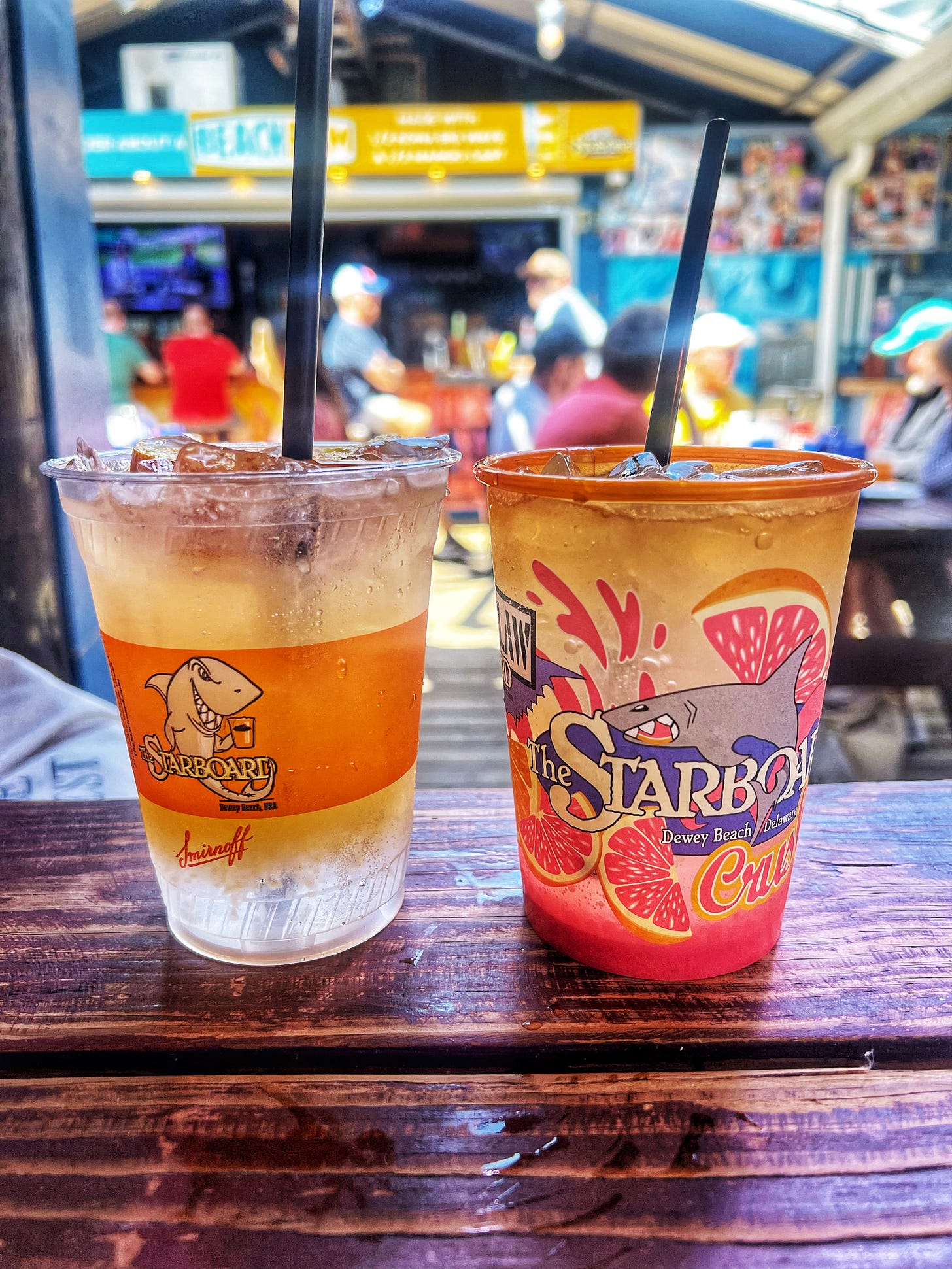
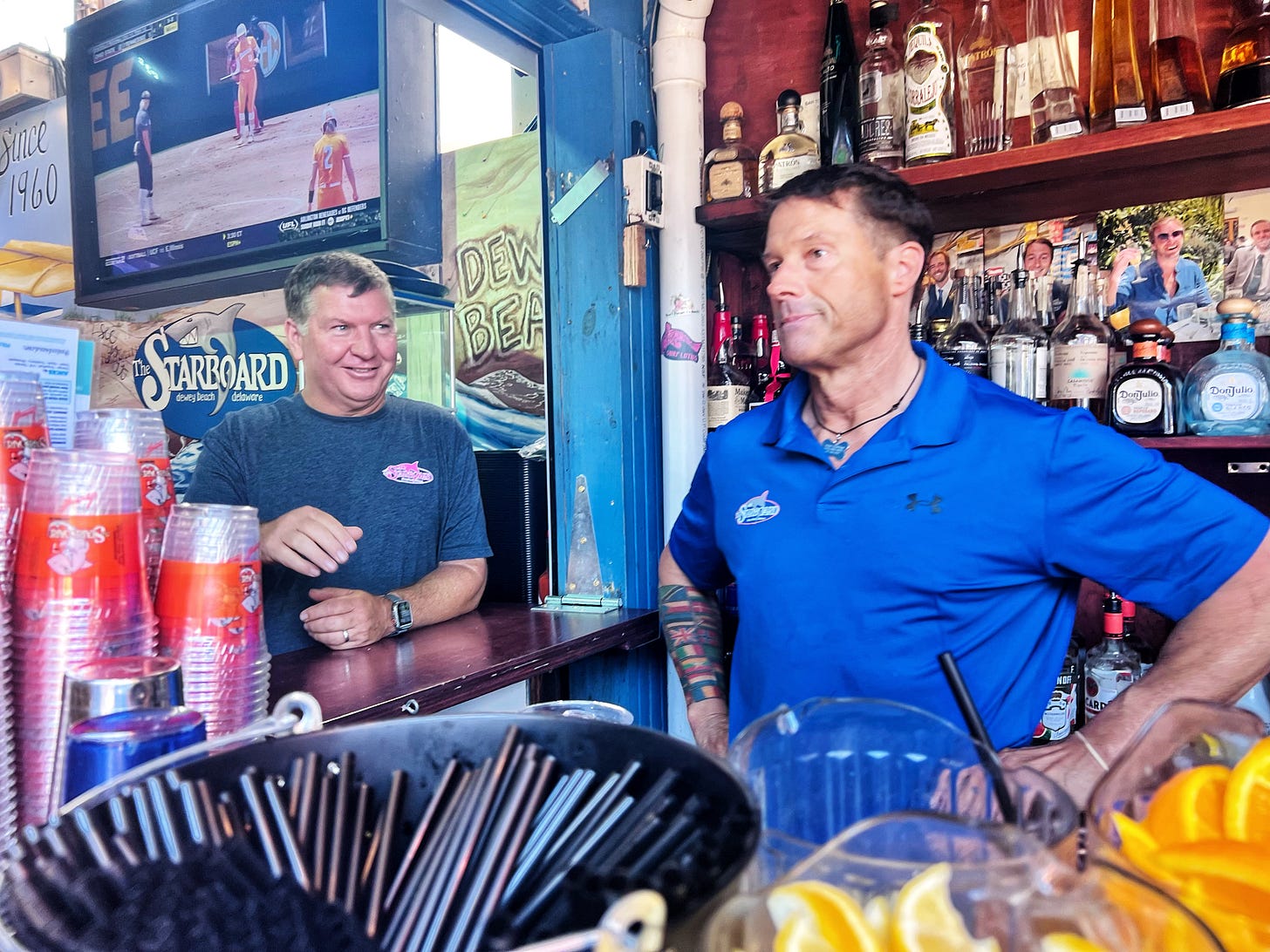



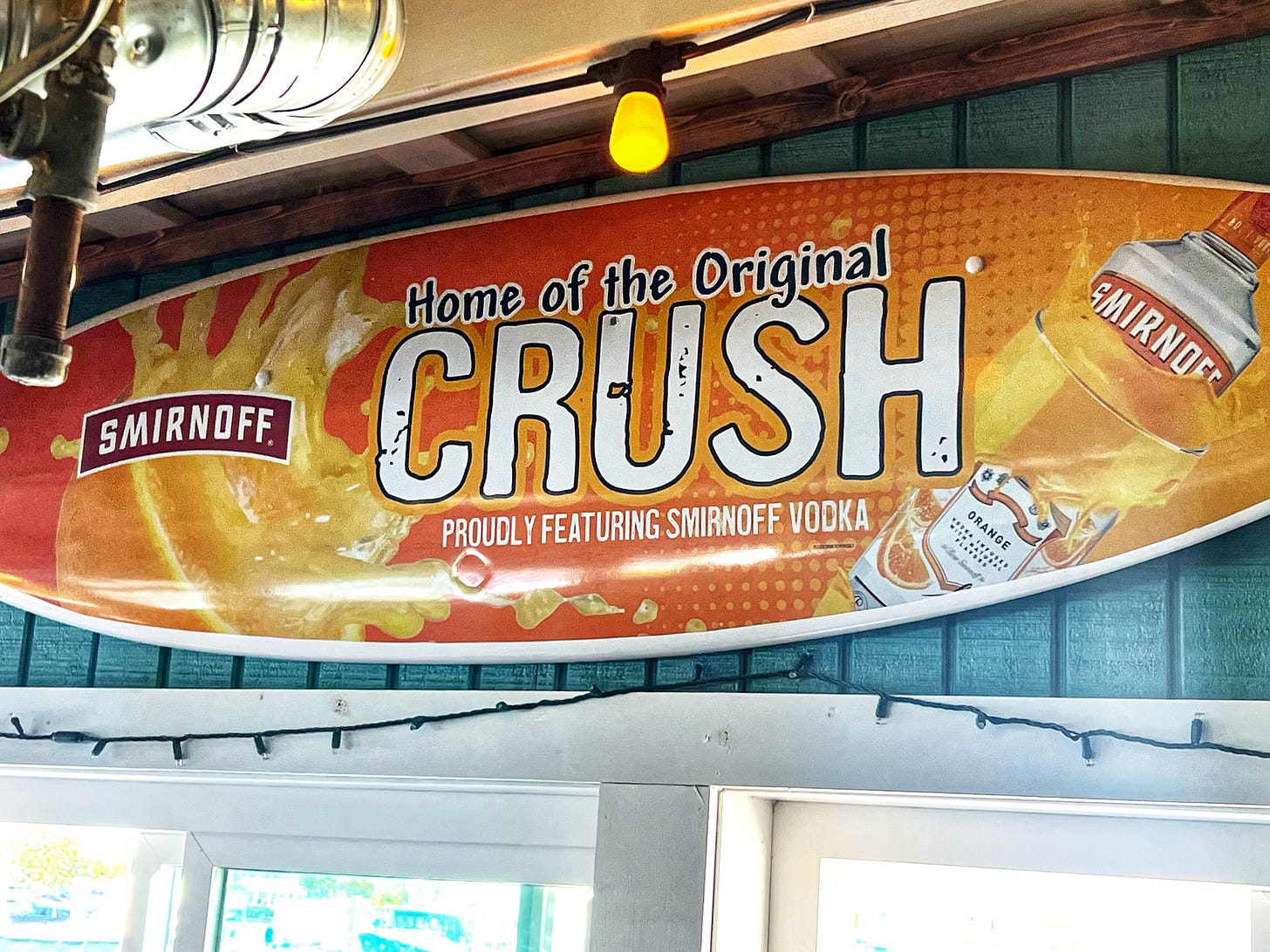
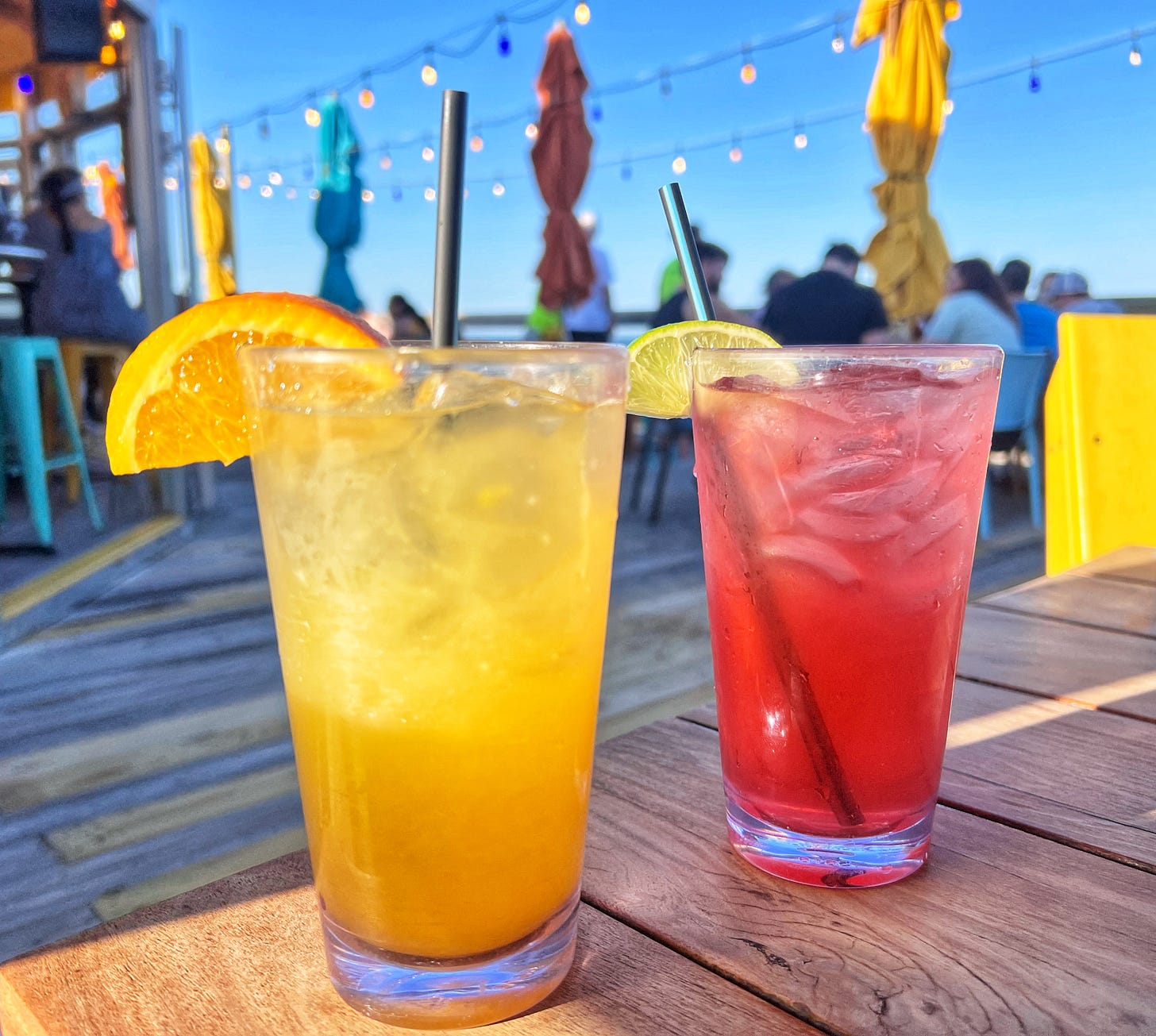


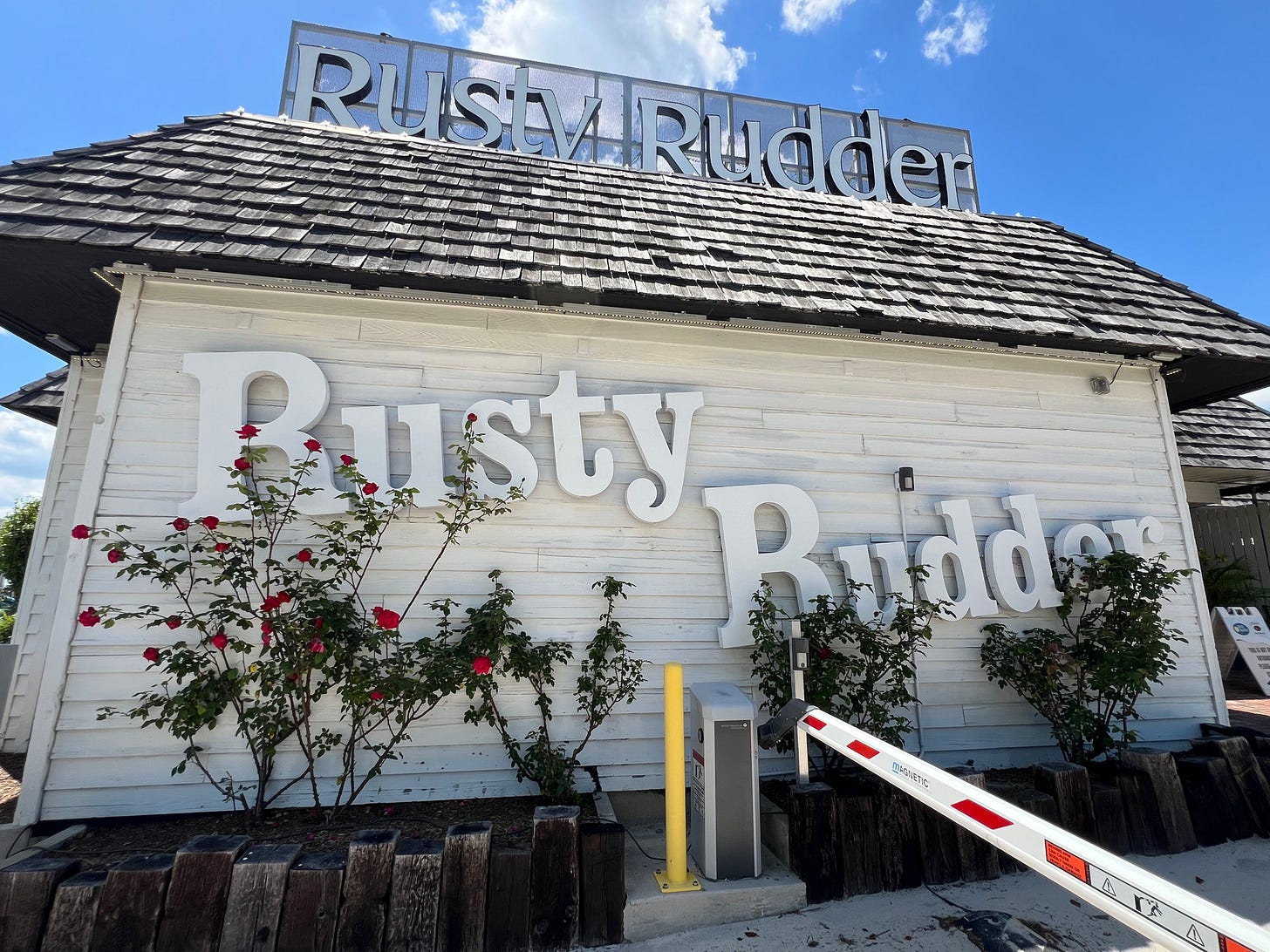
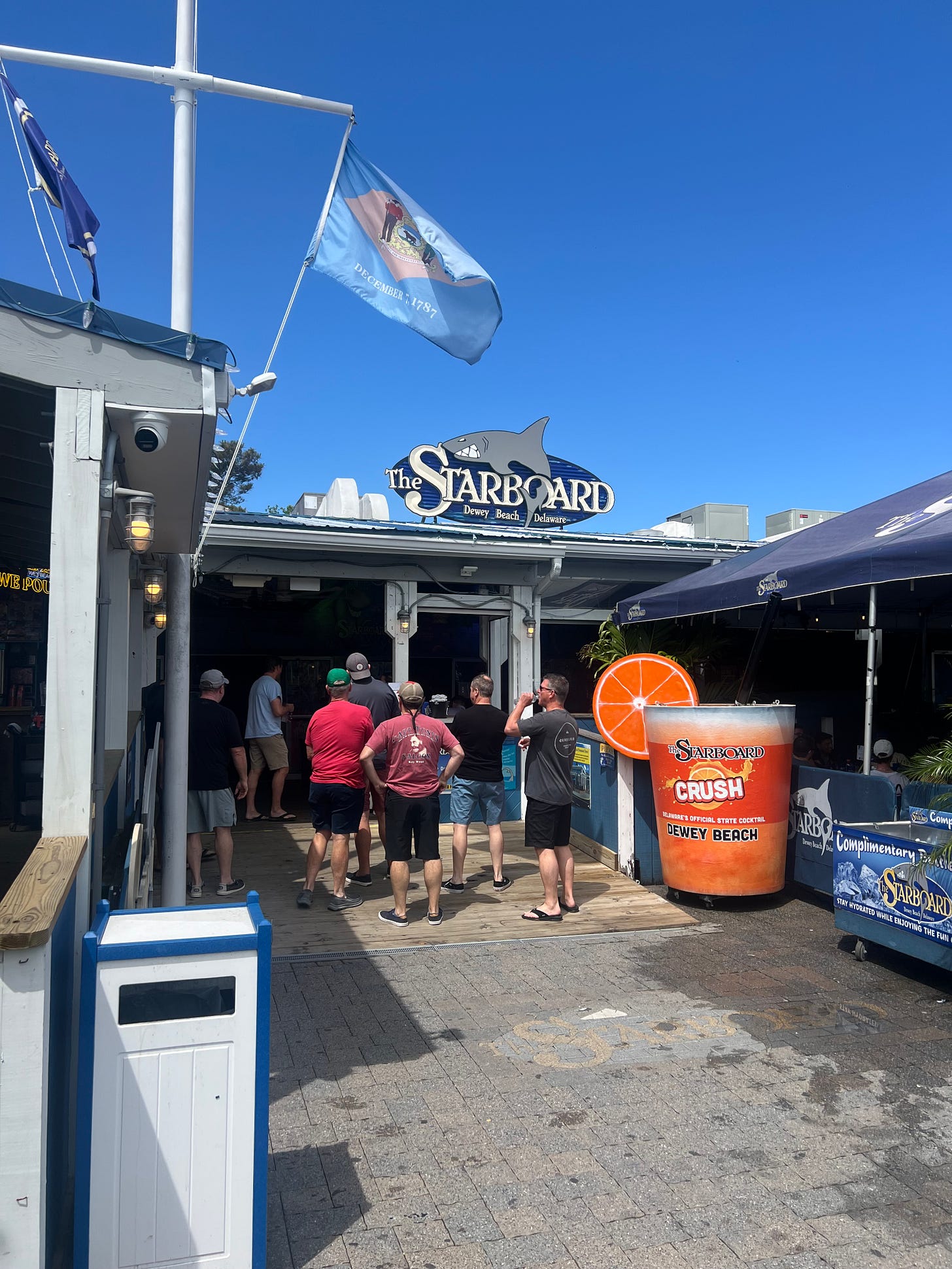
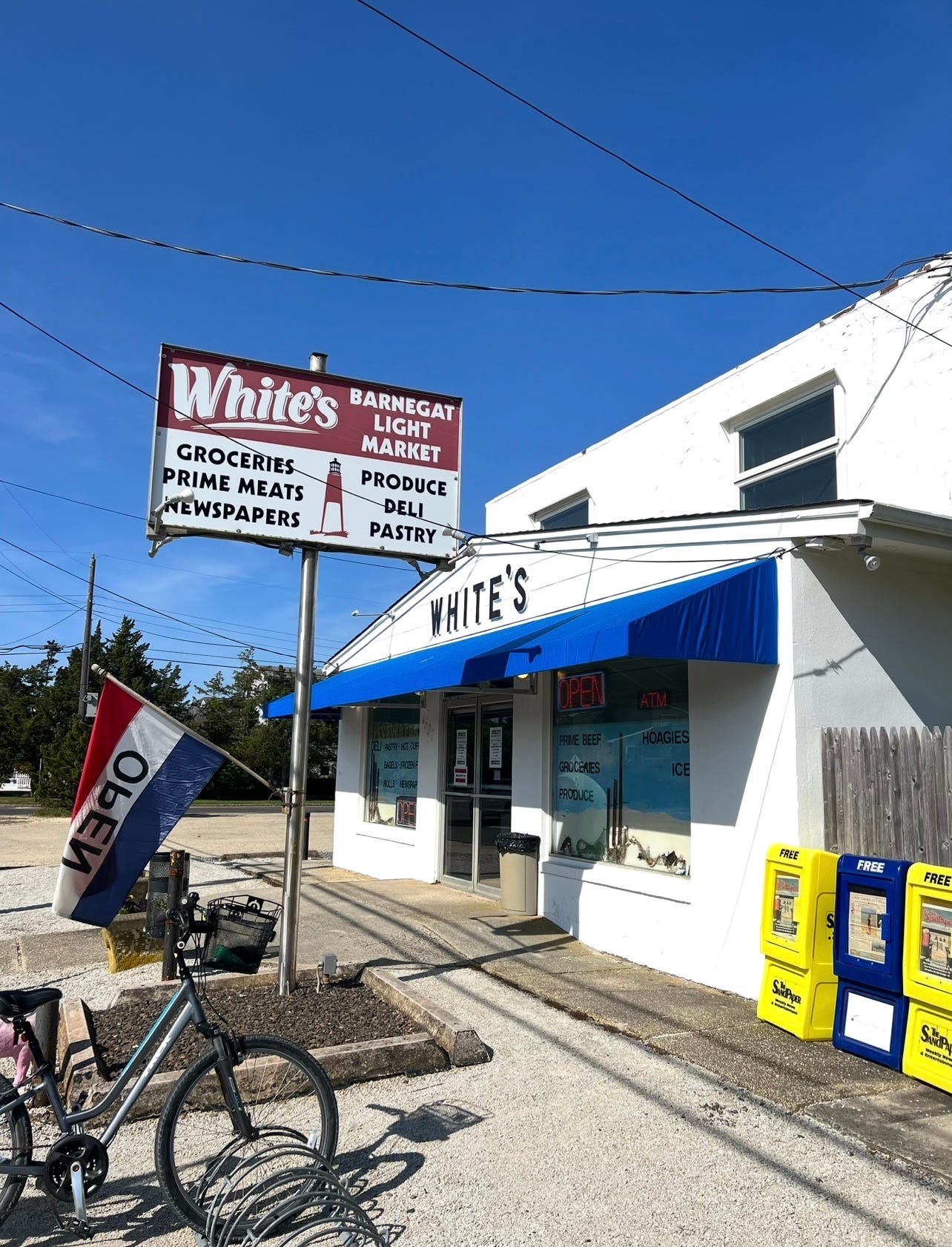
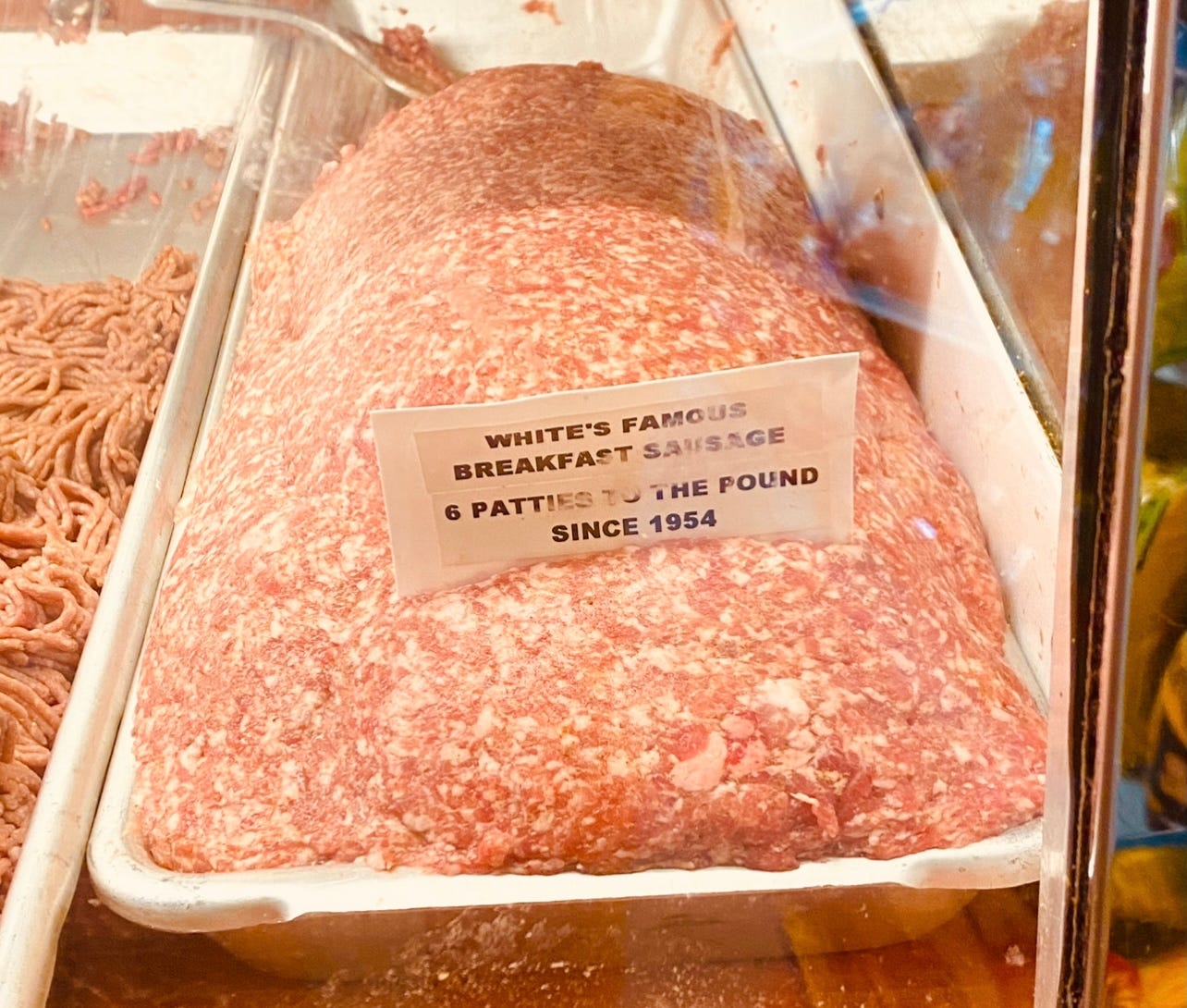
You totally “crushed it” with this article. Lolz. 🧡🍊
This fine article reminds me of a Facebook comment thread on a post asking which cocktails are massive in their home country but basically unknown outwith, such as Canada’s Bloody Caesar. It is also fascinating that drinks like the Crush were served with fresh orange or grapefruit juice in bars that otherwise leaned heavily on sour mix instead of freshly squeezed lemon or lime juice. In his first book, Anthony Bourdain wrote of working for a genius restaurant manager in what must have been the early 1980s in NY, who commanded an army of loyal barbacks, bussers and servers who, among other things “squeezed gallons of lemon, lime and orange juice.”